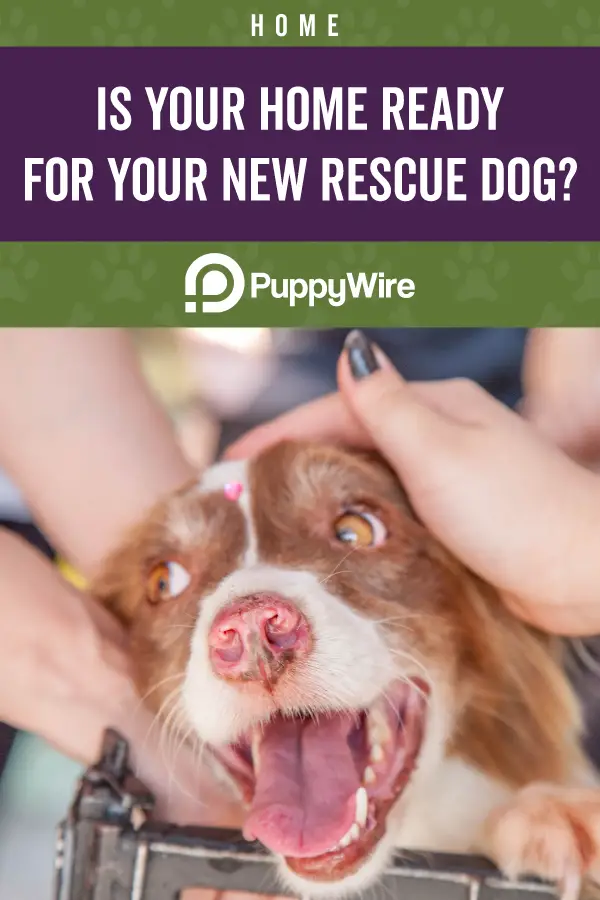Is Your Home Ready for Your New Rescue Dog?
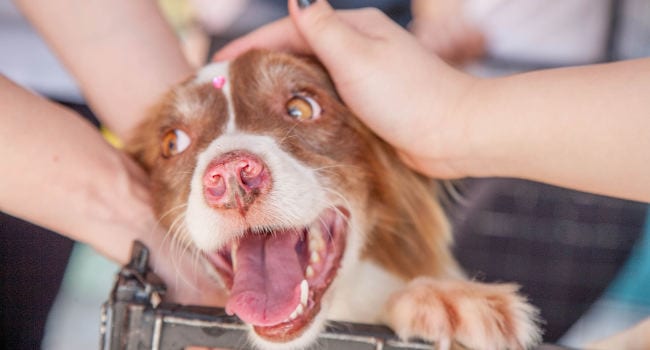
Bringing home a new rescue dog can be an exciting and slightly scary new venture that many people are either considering, in the process of, or have done already. If you’re one of the people considering it or you’re in the middle of the process, this is for you.
Before you bring home your new best friend, there are several things you have to consider and do to make your home ready for your new rescue dog. You have to think about everyday household hazard items and foods, as well as making every room in your home dog proof top ensure your new dog’s safety.
Common Household Hazards for Dogs

We all like to think of our home as a safe place and for the most part, it is. However, for a dog, many common household items and foods present an irresistible danger to their health and well being.
You want to make sure all of these items are well out of your dog’s reach until you teach them to leave them alone, or you’re sure they’re safe around them. This can be challenging if you’ve never owned a dog before, and we’re going to help you.
Common Household Foods That Are Hazardous to Dogs
Bones and Fat Trimmings
- When you feed your dog fat trimmed off of meat products, you could accidentally trigger pancreatitis, and it doesn’t matter if the fat is cooked or uncooked. Additionally, bones can splinter an cause stomach issues, broken teeth, or your dog could choke on it.
Candy, Chewing Gum, Toothpaste, or Baked Goods
- This one may seem more harmless, but most candy, toothpastes, baked goods, and chewing gum have Xylitol as an artificial sweetening agent. This agent can cause your dog’s blood sugar to drop to dangerous levels and it can also cause liver failure over a prolonged time frame.
Coffee, Tea, or Anything Containing Caffeine
- Giving your dogs caffeine can be fatal and it can cause rapid heart rate, elevated blood pressure, and death. Don’t feed your dogs coffee, tea, chocolate, soda, energy drinks, or coffee beans and grounds.
Ice Cream and Dairy Products
- Dairy products like milk and ice cream contain a sugar called lactose, and your dog’s body needs lactose to break it down. This enzyme decreases in your dog’s system as they age, and feeding them dairy can result in digestive issues and diarrhea.
Common Household Items That Are Hazardous to Dogs
Chemicals, Detergents, or Household Cleaning Agents
- Your area under your bathroom or kitchen sink is a popular place for many people to store a variety of cleaning chemicals, bleach, lime-removal products, detergents, and more. Unfortunately, this puts these chemicals right at most dog’s heights, and it makes it easy for them to digest and get sick with.
Household Plants
- There are several household plants that can cause problems for your dog if they digest them including vomiting, diarrhea, blood pressure drop, convulsions, and death. Plants like Azaleas, Tulips, Aloe Vera, Oleander are common culprits.
Prescription and Over-the-Counter Medications
- Dogs are very curious creatures by nature, and many people leave their medications around where your dog can get at it. It is very easy for your dog to have an overdose or drug poisoning with even a small dose of human-grade medications.
String, Rubber Bands, Sharp Objects
- Almost anything and everything your new dog can find and reach, they’ll chew on or eat. This can create several problems including intestinal blockages, stomach problems, choking hazards and more.
How to Dog Proof Your Home Room by Room
Now that you’re aware of some of the common household and food dangers your dog may get into, we’ll discuss making your home dog proof. Your kitchen, bedroom and living room, bathroom and laundry room, and your garage and yard are all important areas.
Kitchen
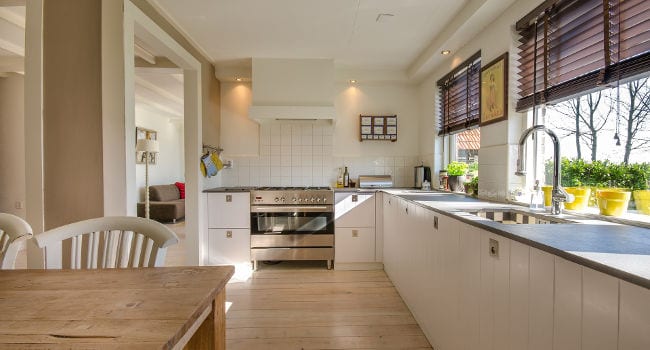
The first thing you should do is move any cleaning products, chemicals, or food out of your lower cabinets and drawers for at least the first few weeks. If you don’t want to move your things or if you don’t have room for them, you can install child locks on all of your lower cabinets and drawers.
You may have placeholder items on your counters like fruit, chocolate, candy, or flowers, and it’s best to move them to a high spot that is sealed off. Even smaller dogs are able to get up on chairs and onto the counter if they smell something they want bad enough.
If your trash can sits out in the open, make sure the lid is sealed tightly, and put a child lock on here as well if it’s possible. This way, if your new dog knocks it over, they can’t get into it.
It is also a good idea to routinely inspect your floor and lower areas for things like twist ties, food wrappers, or containers. Your dog may chew on or swallow twist ties or plastic packaging, and this can lead to digestive issues and bigger health problems.
As an extra safety precaution, until you’ve trained your dog to stay out of the kitchen, baby gates are great alternatives. If you don’t like how they look, there are dozens of stylish low gates you can purchase and install to keep your dog out of the kitchen.
Bedroom and Living Room
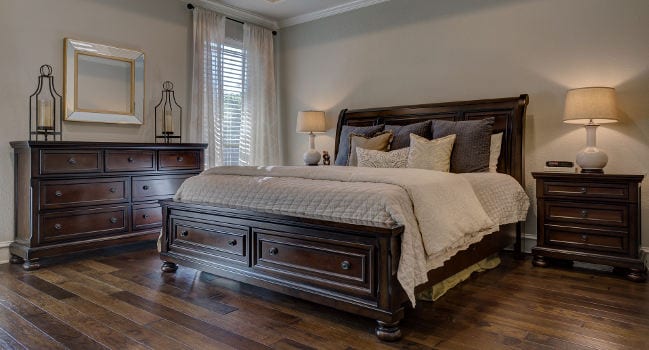
The easiest way to dog proof your bedroom or living room is too close the door and not let them in, but if you’re unable to do that there are several steps you can take to ensure your dog’s safety. Start by taking any edible decorations and putting them away or up in a high area that your dog can’t get at.
If you keep cosmetics, medications, or lotions in your bedroom, put them away either in a cupboard your dog can’t get into or on a high shelf. Remember that your dog can be determined to get into them, so if you can lock them behind a door like in a closet, this is probably the best route.
You also want to ensure that any electrical cords like television, phone, and laptop cords are all out of reach or put behind objects where your dog can’t get in. It isn’t unusual for your dog to chew on electrical cords, and this can lead to injuries.
Put all of your laundry items behind closed doors, and make sure all of your hair accessories are put away as well. Bobby pins, hair clips, drawstrings, buttons, and hair ties can all present serious medical complications if your dog gets into them.
If your living room leads to outside, you may want to consider putting up a doggy gate to stop your dog from running out the door when it’s opened. Also, move any plants you may have around out of your dog’s reach because many of them can be toxic.
Bathroom and Laundry Room
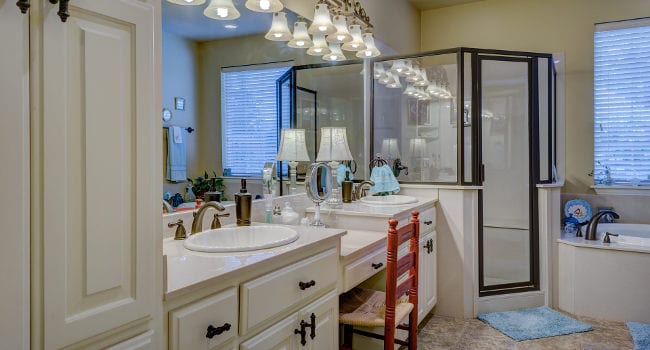
When it comes to your bathroom, you want to start closing the toilet seat once you bring your dog home. If your dog can reach, it isn’t usual for them to want to drink out of the toilet and this is an easy way for them to get into chemicals if you’ve just cleaned it.
Take all of your shampoos, conditioners, body washes, toothpaste, cosmetics, and medications and put them up when your dog can’t reach them. If you can put them in a cupboard with a childproof lock, that is even safer.
In the laundry room, you want to make sure any loose clothing or laundry articles like socks, fabric sheets, and detergent are picked up and put away. Many dogs like to chew on socks, and this can lead to large gastrointestinal problems that may require surgery.
There are also many small spaces in bathrooms and laundry rooms where your dog can get in and get stuck. If you don’t or can’t get them out once they get stuck, this can easily lead to injuries.
It is also a good idea to practice keeping your appliance doors closed along with your toilet lid. Your dog can easily get into your washer or dryer and cause themselves injury while they’re trying to get out.
Garage and Yard

In your garage, move all of your chemicals out of reach or lock them in a secure cabinet. It’s also really important that you clean your garage floor, and anything antifreeze has been in as the sweet smell and taste will draw your dog, but it’s lethal if they digest it.
Additionally, it is a good idea to replace any cardboard boxes with seal-able plastic totes or boxes to store your paint, antifreeze, cleaning solution, oil, and more. Pick up and put away small pieces that your dog could eat like screws, nuts, and bolts as well.
When you’re dog proofing your outdoor area, and you have a fenced yard, check for any holes or rusted spots that your dog can cut themselves on or get stuck in. You also want to fence off or move any plants or compost piles so your dog can’t get them.
If you have a pool area, make sure it is either fenced off with a fence your dog can’t jump, or it’s covered with a durable pool cover, so your dog doesn’t fall in and drown. Make sure you’re not using pesticides in your yard, garden, or plants as your dog could eat these chemicals and get sick from them.
By dog proofing your new home, you’re helping to make your new dog’s transition smoother, and you’re increasing their overall safety. None of these steps should cause a massive disruption in your life, and they’re all relatively straightforward.
If you take your time and go room by room, you’ll have less of a chance of missing an essential part in your dog proofing routine. Your new rescue dog will have a safe environment to live a long, healthy, and happy life.
